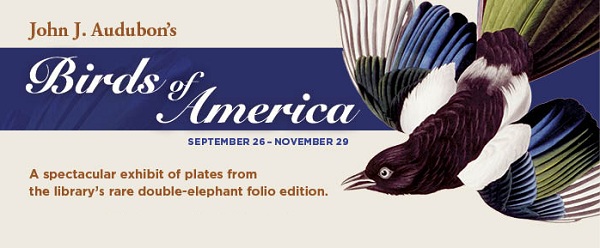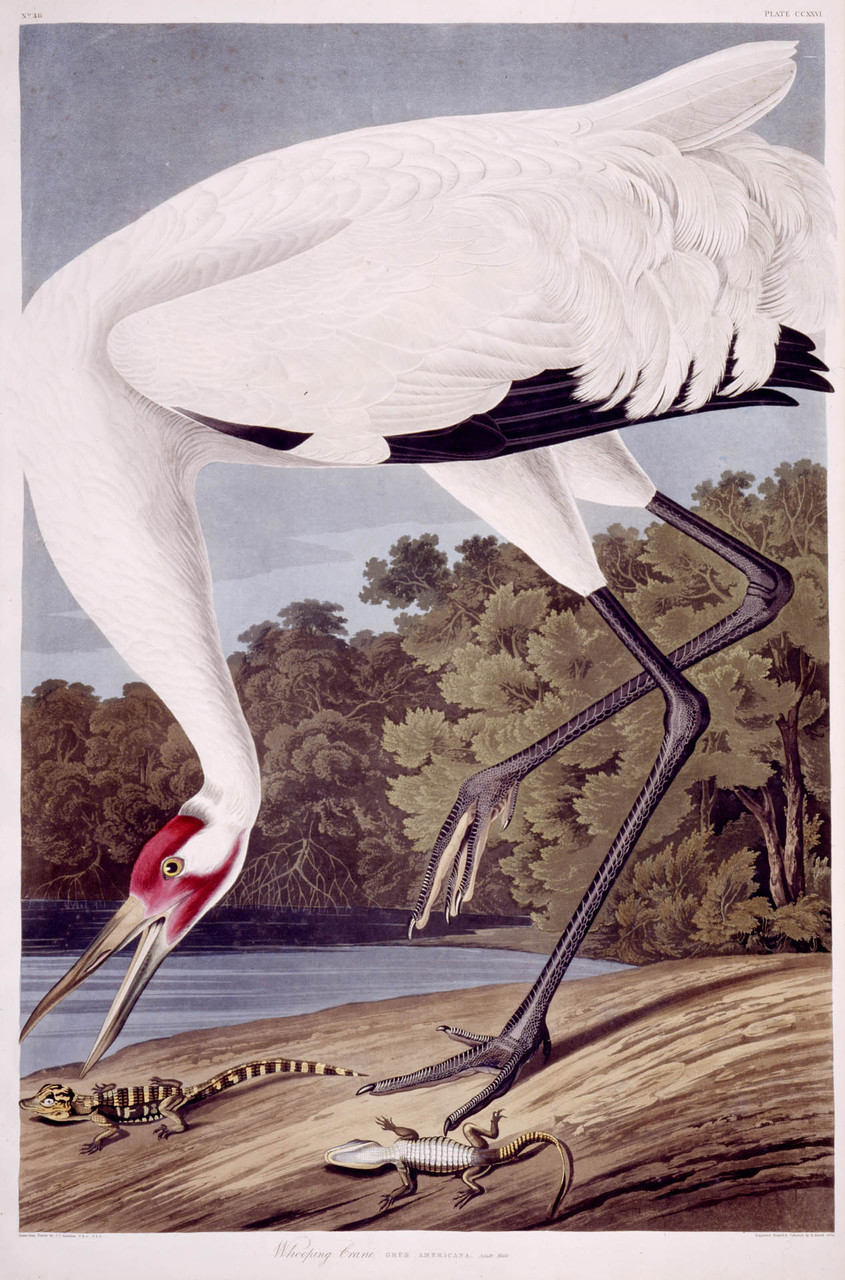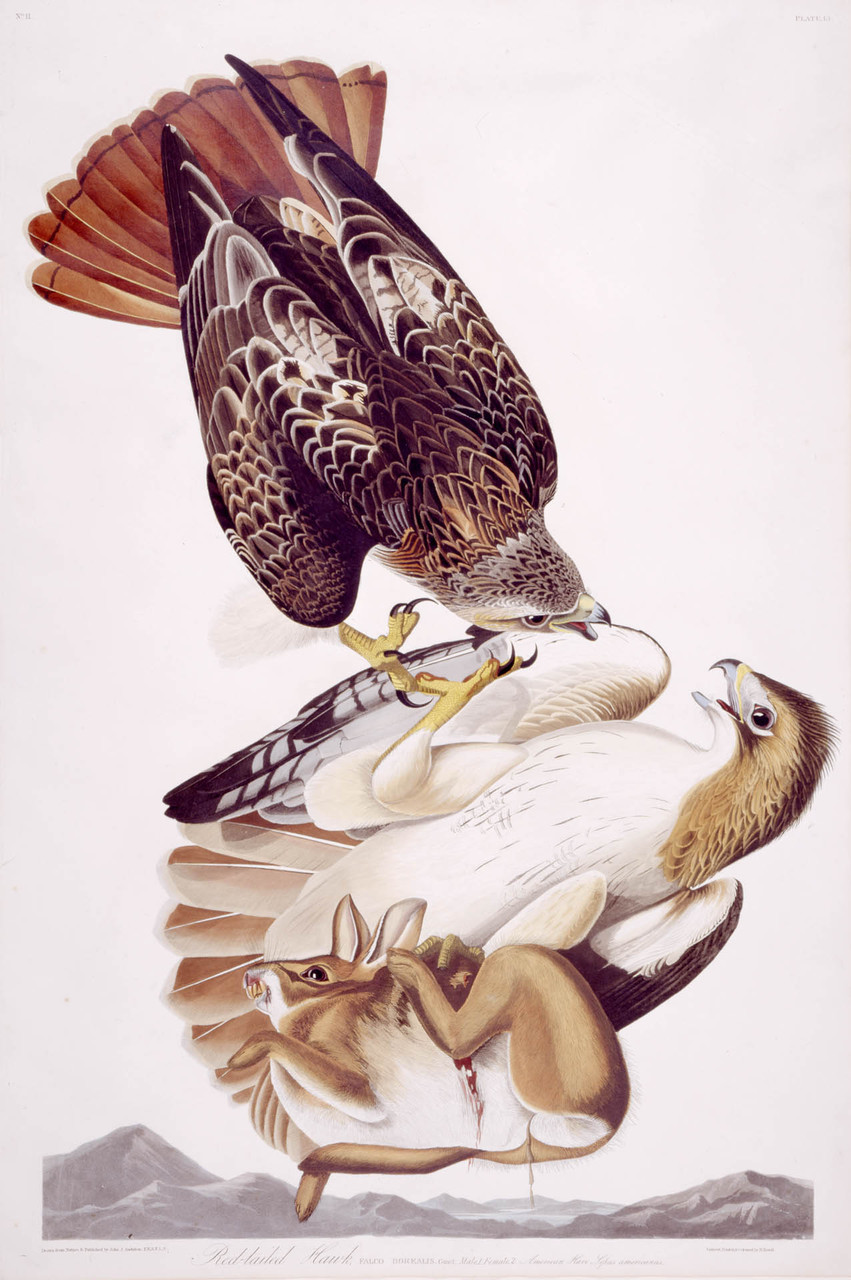Habits and habitats
Naturalist John James Audubon (1785-1851) set out to accomplish an impossible goal: to paint every bird in North America.
In 1838, after years of painstaking work, Audubon completed his masterpiece, Birds of America. A spectacular volume of 435 hand-painted engravings, it remains one of the most beautiful and significant books of natural history ever published.
This exhibition features a selection of plates from the Toronto Public Library’s rare copy of the original double-elephant folio edition. The folio owes its enormous size to the fact that Audubon insisted every bird be illustrated life-sized.
Audubon revolutionized how birds and their natural world were depicted. Unlike the often stiff and lifeless work of naturalists of the time, he painted birds in realistic, often dramatic, poses in their natural habitat. He captured vivid details about the species’ behaviors, mating habits, and diet, as well as the trees and foliage of their native landscapes. In this exhibition, the plates are grouped by habitat to highlight the artist’s ground-breaking approach.
In the years since Audubon depicted these species, some have managed to persevere and flourish, while others have perished because of hunting, habitat loss and other environmental changes.


